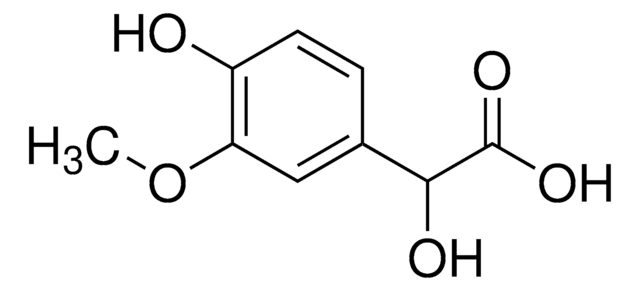11569
3,4-Dihydroxyphenylacetic acid
analytical standard
Sinónimos:
DOPAC, Homoprotocatechuic acid
About This Item
Productos recomendados
grade
analytical standard
Quality Level
assay
≥97.0% (HPLC)
97.0-103.0% (T)
shelf life
limited shelf life, expiry date on the label
technique(s)
HPLC: suitable
gas chromatography (GC): suitable
mp
127-130 °C (lit.)
application(s)
pharmaceutical
format
neat
SMILES string
OC(=O)Cc1ccc(O)c(O)c1
InChI
1S/C8H8O4/c9-6-2-1-5(3-7(6)10)4-8(11)12/h1-3,9-10H,4H2,(H,11,12)
InChI key
CFFZDZCDUFSOFZ-UHFFFAOYSA-N
¿Está buscando productos similares? Visita Guía de comparación de productos
Categorías relacionadas
application
signalword
Warning
hcodes
Hazard Classifications
Eye Irrit. 2 - Skin Irrit. 2
Storage Class
11 - Combustible Solids
wgk_germany
WGK 3
flash_point_f
Not applicable
flash_point_c
Not applicable
Choose from one of the most recent versions:
¿Ya tiene este producto?
Encuentre la documentación para los productos que ha comprado recientemente en la Biblioteca de documentos.
Los clientes también vieron
Nuestro equipo de científicos tiene experiencia en todas las áreas de investigación: Ciencias de la vida, Ciencia de los materiales, Síntesis química, Cromatografía, Analítica y muchas otras.
Póngase en contacto con el Servicio técnico











